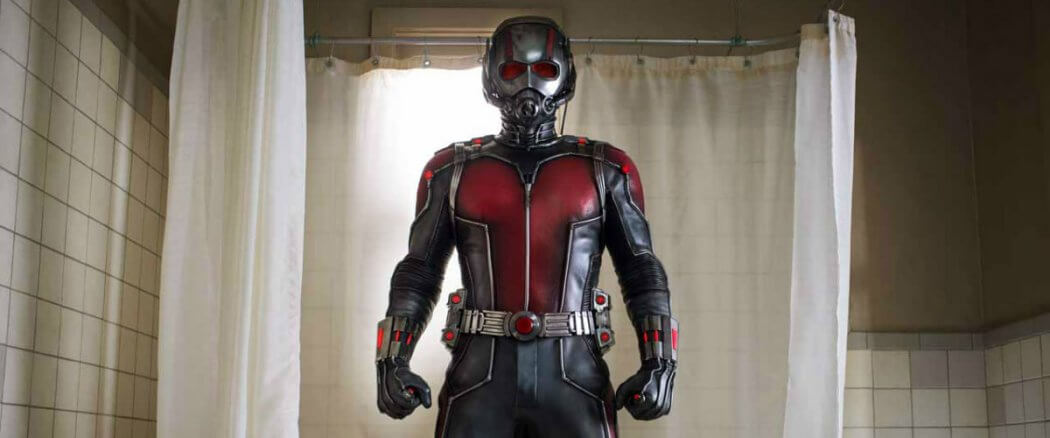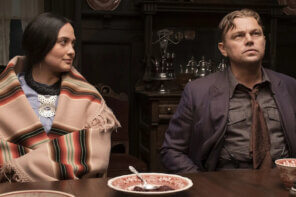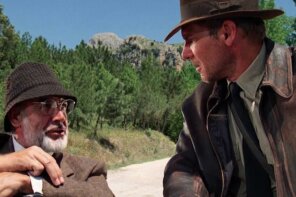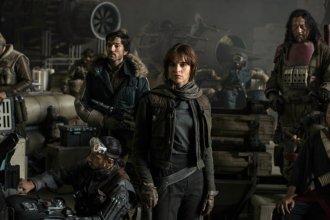Ant-Man doesn’t deserve some of its problems. A few – like “why was this made at all?” – might never be clearly resolved. That problem is wrapped firmly in the claws of another problem: the very public divorce between the film’s original writer – who was also going to direct the project – and Marvel Studios. Can’t blame Ant-Man for that, either.
What we know is Marvel committed to the film’s concept because of an imaginative writer/director who subsequently was removed from the project because he was an imaginative writer/director. One easy observation about this divorce – no one besides the studio wanted the divorce to happen. No one.
Another Ant-Man problem is really a superhero movie problem. When Disney purchased Marvel, it pushed billions of dollars of tentpole goodness into the center of the table, gambling that comic book writers are the best cinematic storytellers. The jury’s out on that bet. For every Daredevil – which explores the humanity, spirituality, and the physical and emotional limitations of trying to be a hero – there’s an Avengers 2.
Joss Whedon, who directed the first two Avengers movies (and left on what seems like less-than-friendly terms), labored to bridge the antiseptic chasm between his film’s heroes, anti-heroes, and regular people by grafting scenes of normalcy into the backstory and life of one of the human Avengers, Hawkeye. The problem was that it felt like grafted-in scenes of normalcy, scenes that made sense but didn’t improve the film’s city-dropping plot. Given that Hawkeye and Mrs. Hawkeye had (were allowed?) only one “real” scene with very limited blocking or movement, I felt like I was watching a life insurance commercial instead of a film.
It wouldn’t surprise anyone that most of the real people in Avengers 2 are digital extras. In films like these, or the first Avengers, or Man of Steel, the real people are props populating a city. The regular people are afraid, they scream, they run, they are placed in the midst of terrible devastation, and the superheroes save them. Before superhero movies, Hollywood was making films about the first part of that sentence. (See Below.)
Storytelling in Keyframes
Comic book writing is keyframe after keyframe. We love keyframes. Consider how we retell a story from memory, grouping entire sequences and emotions around a single hilarious thing someone said. The moment the roller coaster plunged from its highest peak, or what happened when you held that winning trophy aloft. Me standing next to my brother and mother at my father’s casket, my mom clutching an American flag folded into a tight triangle.
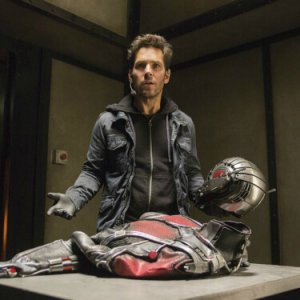 But it’s humanity that makes those keyframes authentic. The nights of studying before the test; the long bus rides wandering from small town to small town playing the same 9-song set; the dinners when the food wasn’t the best, but it was the best food you had.
But it’s humanity that makes those keyframes authentic. The nights of studying before the test; the long bus rides wandering from small town to small town playing the same 9-song set; the dinners when the food wasn’t the best, but it was the best food you had.
Typically, superhero movies have resolved their films’ need for humanity by telling origin stories. Origin stories deliver the most humanity because they tend to start with our hero as a human, some sad sack who encounters the radioactive spider or the radioactive explosion or the aliens. The hero’s naiveté and acclimation to their new powers are on display. We learn with them.
When it comes to the biggest, most popular superheroes, we’re out of origin stories. For some characters, we’re a few films past origin, and – as best demonstrated in Ironman 3 – it’s showing. Ant-Man had a chance to put us right back in the soup with a new origin, but instead, Marvel chose to tell a different story – a flashback origin story upon which a comedic caper resides.
The result is something like Luke and Yoda on Dagobah, but with Michael Douglas instead of Yoda, and instead of light sabers and The Force, it’s a suit that makes you tiny and able to talk to bugs. I think you can sense which one worked better.
A Visit to the Zoo
One last unwarranted problem – and this one rests squarely with comic books – the preponderance of characters that aren’t actual humans in superhero movies. With each new superhuman/alien/robot you add to your universe’s expansive cast (Vision is kind of a Siri with some kind of magic stone in his head wearing a vinyl suit, right? I think?), we in the audience feel less and less like we belong in the room. We came to see a film, we ended up at the zoo, staring at creatures from far-away places that share nothing in common with us.
So, in light of its problems, Ant-Man is pretty good. Sure, out of eleven characters with any legitimate speaking parts, five have some kind of power or access to technology that provides a power.
But wisely, Ant-Man realized it’s the human characters – the regular people – that buoy the film and drive the plot. We end up waiting impatiently for Scott to learn his Ant-Man stuff so the plot can move on.
All Hail The “That Guys”
Credit a ton of Ant-Man’s appeal to Michael Pena, quickly becoming one of Hollywood’s most gifted “That Guys” (My top three in the “That Guy” pantheon: Nick Searcy, Stephen Tobolowsky, and Nick Swardson) (The “That Chick” category is led by Ant-Man’s own Judy Greer). Charming, quick, with a strong sense of comedic timing, Pena steals every scene he’s in, and it appears he’s just getting started.
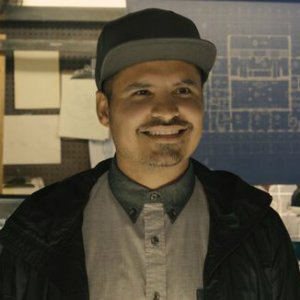 But the real credit for the film’s effectiveness goes to Ant-Man’s writers and re-writers, Edgar Wright, Joe Cornish, Paul Rudd and Adam McKay. They artfully weave in the film’s necessary exposition (there’s a lot), adding comic beats and irreverence to keep the film on the Guardians of the Galaxy side of the storytelling meter.
But the real credit for the film’s effectiveness goes to Ant-Man’s writers and re-writers, Edgar Wright, Joe Cornish, Paul Rudd and Adam McKay. They artfully weave in the film’s necessary exposition (there’s a lot), adding comic beats and irreverence to keep the film on the Guardians of the Galaxy side of the storytelling meter.
Paul Rudd can join Tom Cruise in the fraternity of actors who get overlooked because personality and timing in acting generate box office, but rarely acclaim. Hollywood is constantly handing awards to people who get ugly – gain weight, grow extra/shave all their hair or wear a prosthetic nose/scar/something else; and critics lap up performances by those who play a disability. Check that, partial disability (**warning: language). But if an actor shows depth and humanity that happens to mirror characteristics of their own personality…Hollywood figures that’s not acting.
Rudd rarely misses a chance to be funny, and Ant-Man demonstrates he could have been an effective dramatic leading man. We’re better off with Brian Fantana, right?
I Miss You, Daddy
Ant-Man’s emotion relies on one of the themes God has hard-wired into all of us – a separated parent and child, longing for reunion. It’s the fertile ground that has fostered films from Finding Nemo to 12 Years a Slave to Gladiator to Tangled to Harry Potter. It’s an emotion important to God, a clue to a truth so important that He has guided us to tell and retell it. Kal-el, Bruce Wayne, Pinocchio, all miss their dad. Include me among the filmmakers who have retold the tale.
I was struck by the startling similarities in shot selection, line choices and reads, between another recent “I miss you, Daddy” film – Interstellar – and Ant-Man. In both cases, the film’s hero becomes a scientific kamikaze, entering a dimension he has been warned he will not survive, solely out of love for his daughter.
In both cases, the hero floats in this terrible dimension, his daughter’s voice echoing through his mind and space. “I love you, Daddy,” he hears, as he gives the ultimate sacrifice. I’d like to know who wrote their script first – the Nolan boys or Rudd/McKay. Regardless, the words and the sacrifice are older than either film.
Because something is told and retold doesn’t mean we’re tired creatively. It’s much more likely that there is a truth there, a truth so incontrovertible that 100 artists could all tell a flourishing story rooted in the same ground. God knows the longer we tell and retell this story, Acts 17:27 may well occur.
Enjoy Ant-Man, its problems, and flaws. It likes humans, which is more than we can say about some other comic book films.
From the Inconsequential to the Essential
Make sure to see Spielberg’s epic Bridge of Spies. Consider a film made by the art form’s preeminent director, lensed by its preeminent cinematographer, written by its preeminent screenwriters, and starring one of the era’s best three actors. You should see that film, right? Apparently, not many are.
Don’t miss this film. It doesn’t like humans. It loves them. Loves that they are capable – even the guy next door – of greatness, of courage, of loyalty and love. James Donavan has no power except that he is the Standing Man. He doesn’t quit.
 Directed by Spielberg – with a love for the concept of freedom that, sadly, perhaps only Spielberg can express – alongside his long-time cinematographer Janusz Kaminski, who has mastered shadows and light to gallery-level art – Bridge of Spies is everything the art form can be – a thrilling story, a powerful commentary, an in-depth study of humanity, a masterwork of acting, directing, sound and editing which transports us to a time many of us have forgotten.
Directed by Spielberg – with a love for the concept of freedom that, sadly, perhaps only Spielberg can express – alongside his long-time cinematographer Janusz Kaminski, who has mastered shadows and light to gallery-level art – Bridge of Spies is everything the art form can be – a thrilling story, a powerful commentary, an in-depth study of humanity, a masterwork of acting, directing, sound and editing which transports us to a time many of us have forgotten.
The Coen brothers (with help from Matt Charman, the writer of the underrated Suite Francaise) add all the detail that makes characters human. Each side in this post-war war is guilty of a lack of trust, over-aggression, and avarice. But powerful performances and the humanity of each character keep this film from cardboard anti-heroes. I do not want the spy to die for spying. Mission accomplished, Coens.
And then there is Hanks. Everything I said above about Cruise and Rudd is perhaps controverted by this masterful actor, who always weaves his personality into his roles. Sure, he’s uglied up before, but he’s still – in part, at least – skinny Tom Hanks. It’s easy to argue that this film, in the hands of anyone but the best of the best – Streep, Day-Lewis come to mind – lurches to cinematic gurgle or otherwise completely misses the heroism Hanks delivers. This is Hanks at his finest, right up there with Cast Away.
What It Costs
This film, too, contains a theme we tell and retell – that of the trade. One man for another. One life for another. Blood for blood. But in this story, James Donovan demands that two lives are spared for one. Kaminski puts the men on a wonderful allegorical stage – a bridge over a river, flowing wildly below. Snipers mind their scopes, and at either end of the bridge stand the partners in a trade. How differently would we act if we saw what was traded for us. Who was traded. And what he did to deserve being part of the transaction.
Bridge of Spies tells a story few knew and most have forgotten. It’s a stark reminder of the cost of freedom, and the power of kindness. It’s a beautiful work of art.
Bridge of Spies has problems too – but the problems are all ours. We forget what has freed us and how, forget that the bad walls are the walls which imprison, forget that evil indiscriminately jails innocents for no reason (Free Saeed. Today. Why don’t we care?), forget that courage comes at a cost.
My grandmother crawled under the barbed wire depicted in this film. She didn’t need Kaminski or the Coens or Spielberg to illuminate her beauty and strength, as she inched ahead on her stomach as the sirens wailed and bullets whizzed over her head. It’s a little easier for me to remember.
Superheroes pay superficial prices. Tony Stark can build another home, another suit. Captain America lost his true love. But Donavan’s children were shot at because their dad stood up for the idea of justice. Scott Lang wouldn’t need a suit to be dwarfed by the bravery and courage of real people – past and present – living and protecting an idea.

